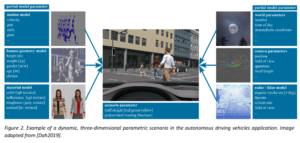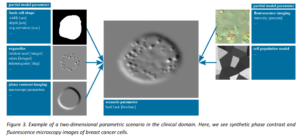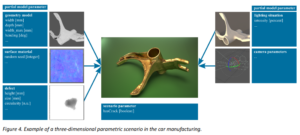Large-scale Biodiversity Monitoring Based on Deep Learning
The goal of this application area is to transition from traditional biodiversity monitoring to
automated monitoring systems including field cameras, canopy cameras, mobile tools, satellites,
and drones. An example is Pl@ntNet [Pl@ntNet] is a citizen science project, available as an app,
that helps users identify plants thanks to their pictures. It relies on CNN-based image
representation training and extraction subsequently used for species prediction. Open research
directions in this project concern the possibility to (partially) shift learning and inference from
today’s implementation where both are centralized towards a hybrid, distributed
(HPC/cloud/edge) implementation. This Use Case motivates the need for understanding end-to-end
performance (project objective 2) and better memory management for both for training and
inference (project objective 3). Concretely, in this project we will use the Pl@ntNet application
available at Inria to extract experimental scenarios and to validate the outcome of WP2 through
experiments using Pl@ntNet code deployed on hybrid HPC/cloud/edge infrastructures emulated
on the Grid’5000 testbed.
Pedestrian Detection and Intention Prediction in Autonomous Driving Vehicles
The goal of this scenario is the creation and verification of an artificial intelligence system that
will automatically detect pedestrians and predict their intentions, in order to perform emergency
maneuvers to avoid imminent pedestrian collision. The scenario motivates the use of synthetic
training data (project objective 1) as real-world data of pedestrian collisions is unavailable in
sufficient quantity and variety for statistical and ethical reasons. It motivates the reproducibility
aspect of a deployment platform (project objective 2), as the verification of such AI systems will
require repeatable verification. Finally, the scenario motivates the use optimizing compiler
technology and efficient training (project objective 3), as the large variance in the scenario leads
to enormous amounts of both training, and test data, such that efficiency of computations and
memory management becomes a priority. The Use Case is being developed in a series of BMBF-funded
DFKI-research projects (React 2018-2020, Direction 2021-2023, XAINES 2020-2024) as
well as cooperative projects such as KI-Absicherung (part of the large VDA initative on highly
automated driving, 2019-2022) funded by BmWi and LidarShared (2020-2021) funded by BmVi.
Furthermore, DFKI is part of the Acatech platform Learning Systems, in which relevant
contributions to the use case are put forward as well.
Breast Cancer Detection in Fluorescence Microscope Images
The goal of this scenario is the detection of a specific type of breast cancer cells from fluorescence
microscopy images. Using Deep Learning technology, this technique can identify specific subtypes
of cancer in clinical routine (as opposed to research studies), which allows for medication with
very effective drugs that unfortunately have severe side-effects and cost and therefore cannot be
administered speculatively. The scenario motivates the use of synthetic training data (project
objective 1) as real-world data of the cancer cells is not available in sufficient quantity, the
collection of such data is difficult for legal and cost reasons, and the manual labelling (semantic
segmentation) constitutes an infeasible effort. It motivates the reproducibility aspect of a
deployment platform (project objective 2), as the FDA approval of the trained systems will require
studies that demonstrate the reliability and reproducibility of the method. The use case is
developed by our partners at Leibniz INM in the projects HEReHERe (funded by Else Kröner-
Fresenius-Stiftung) and MetGaP, funded by Deutsche Krebshilfe. Funding to involve DFKI in the
lien of research is currently being requested.
Defect Detection and Classification in Car Manufacturing
The goal of this scenario is the detection of manufacturing defects in a production line, for
example in metal injection molding for gears. Using Deep Learning technology, optical inspection
systems allow the real-time detection of a defect at various positions in the production line, but
requires specific training for each new product. The scenario thus motivates the use of synthetic
training data (project objective 1) as real-world training data is not available at the time of
training, and data showing defects is not available in sufficient quantity because of low defect
rates. The scenario motivates the aspect of understanding how the end-to-end performance of
systems behaves in a real-time scenario (project objective 2) as inspection systems need to keep
up with production schedules. The same argument also motivates the use of high-performance
compiler technology and efficient inference (project objective 3). The Use Case originates from
the industry research project SCORTEX-SOW1, similar approaches are followed in the COGNITWIN
EU Project (870130).





